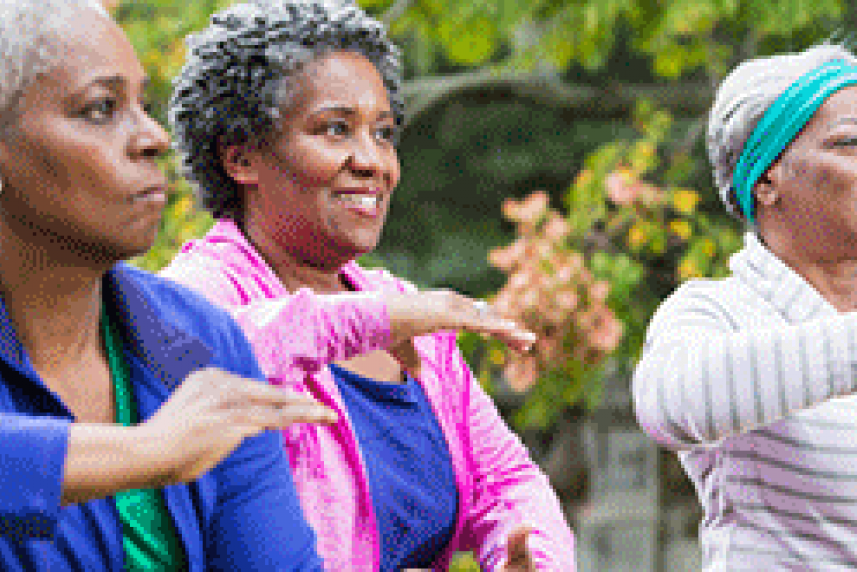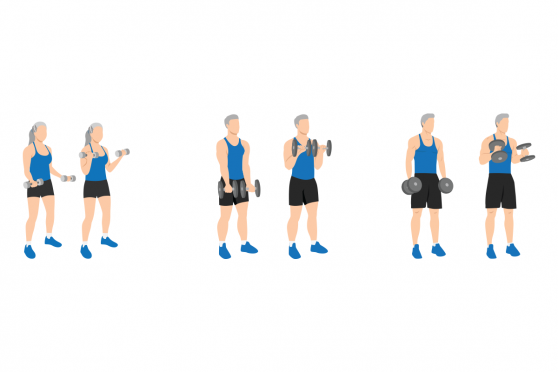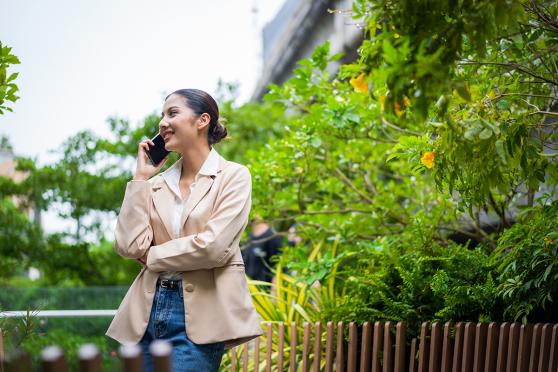Tai Chi for Beginners
Improve your posture, flexibility, and balance.

When it comes to Tai Chi, chances are your only exposure has been to pictures of serene-looking people in comfortable clothing or slow-moving students practicing in a park. Although this exercise may appear slow, moving with care has more benefits than one would think.
Tai Chi is an ancient form of martial arts that is taught primarily now as a health system, says Robert McManus, a Tai Chi teacher in Providence, Rhode Island. And while at first glance it may seem like the calmest of martial arts, it packs a punch for your health and wellness.
"When done properly, the idea is to soften connective tissue throughout the body, looking for flexibility and suppleness to avoid tightness and stiffness," McManus says. The slow movement and gradual opening up of limbs and joints helps to gently increase flexibility and reduces overall soreness. Tai Chi focuses on the yin and yang of exercise, the contraction and stretching of muscles for a complete, holistic exercise. "The big part of Tai Chi is cultivation of energy and the movement of energy in the body," he says. It's a beneficial exercise to improve flexibility, balance, and posture for everyone from martial artists to seniors.
Tai Chi is great for people new to exercise because the movements are relatively low-impact and don't require that much strength. It will help you gain mobility and bring awareness to different parts of your body. If you're ready to give it a try, put on some comfortable clothes and find a calm, quiet place. Begin with Wu Chi, or the practice of standing.
Wu Chi for Beginners
Wu Chi is the beginning to most Tai Chi practices. The aim is to stand properly, align the skeleton, and prepare the body for more rigorous movement. Two minutes of Wu Chi a day will help to ground yourself in your body and prep you for your day.
Start by placing your feet shoulder-width apart and begin focusing on your breath. Hang your arms by your sides. If you feel balanced and grounded, close your eyes. Begin to feel your footprints on the ground, focusing on the outside edge of your feet, your heels, the balls of your feet. Notice the arches supporting your feet and feel gravity pulling on your ankles. Slowly begin to draw your focus up to your knees and hips. Pull your navel into your chest and roll your shoulders back, relaxed, and lift your heart forward and up.
To align the skeletal system, inhale and exhale, and follow each breath as it moves through you. As you inhale, feel your energy move up. As you exhale, feel your energy ground into the earth. With this exercise, your body weight will sink into the lower body and it will help you strengthen your bones, McManus says.
If you're looking to expand your practice, see if your local community center, YMCA, or gym has classes.
Pro Tip: There’s a reason that the image of a Tai Chi class in the park exists. It's not something you can do with the television on. Go outdoors to a quiet space or an uncluttered part of your house instead. To reap the benefits of Tai Chi, it's important to be aware of each breath, position, and change as you practice and not be distracted.
Talk to your doctor before beginning a new exercise program.



